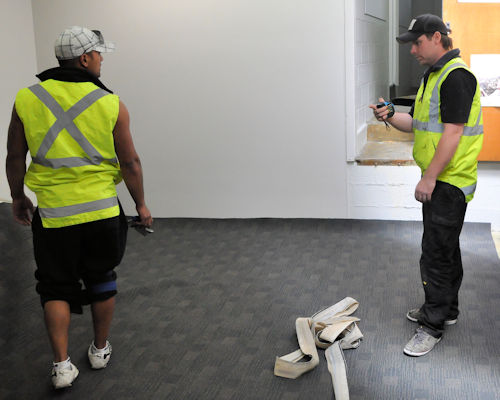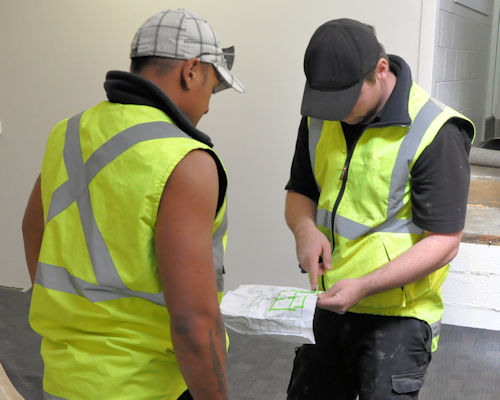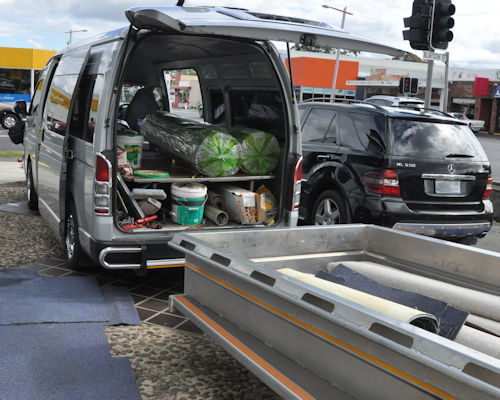Planning and documentation
 Audio for slide 1 (mp3 |6|KB)
Audio for slide 1 (mp3 |6|KB)
All tasks need a plan.
By thinking through the job in advance, you can decide on what tools you'll need, what precautions you must take, where you'll start, what you'll do with the rubbish, and whether there are any other factors that will affect your ability to get the job done.
Planning the job helps you to predict any obstacles or problems that might crop up while you're working, so you can take steps to deal with them before they give you grief.

 Audio for slide 2 (mp3 |6|KB)
Audio for slide 2 (mp3 |6|KB)
Most companies give their flooring installers a work order (or job sheet) that sets out the details of the job.
If your only task is to take up the old floor coverings, you might not need much more information than the address, contact person and the type of flooring to be removed.
On the other hand, if your work duties also include the installation of the new covering, you'll be given more documentation, such as a floor plan and specification for the project.
We've talked about the various documents used by flooring installers in other units from the Flooring Technology resource. If you need to refresh your memory on what these documents contain and how to read them, see the Work documents unit.

 Audio for slide 3 (mp3 |6|KB)
Audio for slide 3 (mp3 |6|KB)
Here is a brief list of the sorts of questions you should ask yourself when you're planning to take up the floor coverings at a jobsite:
- Are there furniture items or fittings that will have to be removed in advance? Whose job is it to remove them? Where will they go once they've been removed?
- Is there good access to the work area, particularly if a trolley is needed to take old coverings or debris from the room it's in to the outside of the building?
- Where will the old materials be placed? Is there a skip on-site, or will you need your own truck or trailer? Whose job is it to take the materials away and dispose of them?
- What types of materials are being removed? Is there a chance they may contain asbestos dust, infectious substances or other hazardous elements in their make-up? What PPE or special arrangements will apply to the handling of these materials?
- Which items of equipment will be needed? Are they all readily available, or will you have to hire or organise a particular machine for the job?
- Is all the equipment in good working order? Have electrical items been tested and tagged within their due dates, and has the routine maintenance been carried out?


Learning activity
Audio 4 (mp3 |6|KB)Let's say that you've been asked to take up an old vinyl tiled floor, laid on a concrete subfloor. You drop in at the jobsite on your way home the day before to have a look, so you can plan the job in advance.
When you get there, you discover that the room is upstairs in the building shown below. There is a plumber working downstairs and a tiler laying slate near the front entrance door. An electrician has been working upstairs, and is due to return in the coming days. The roadsign outside says that it will be a clearway each weekday morning from 6-10 am.
What sorts of things will you need to check out and talk to the builder about when you plan this job? In your workbook, write down the issues you should discuss. You may also include ways you could overcome the main logistical challenges involved in carrying out the job.






